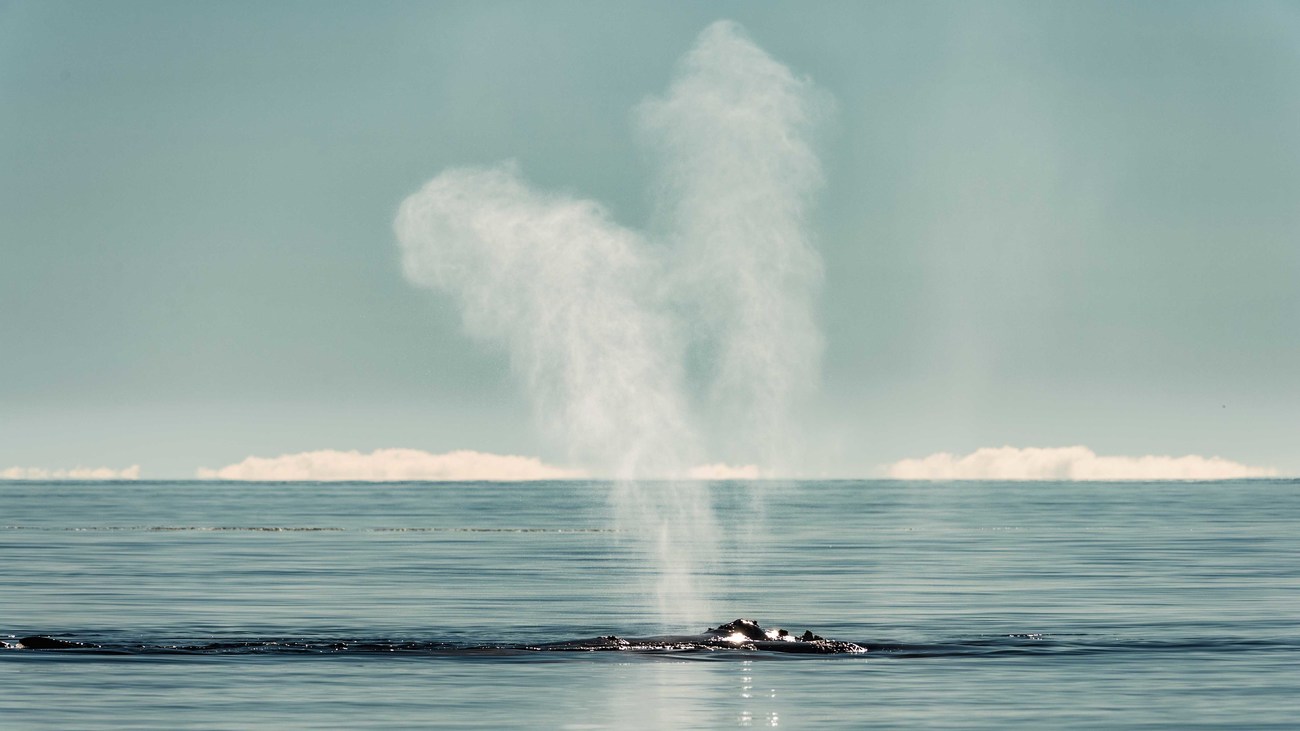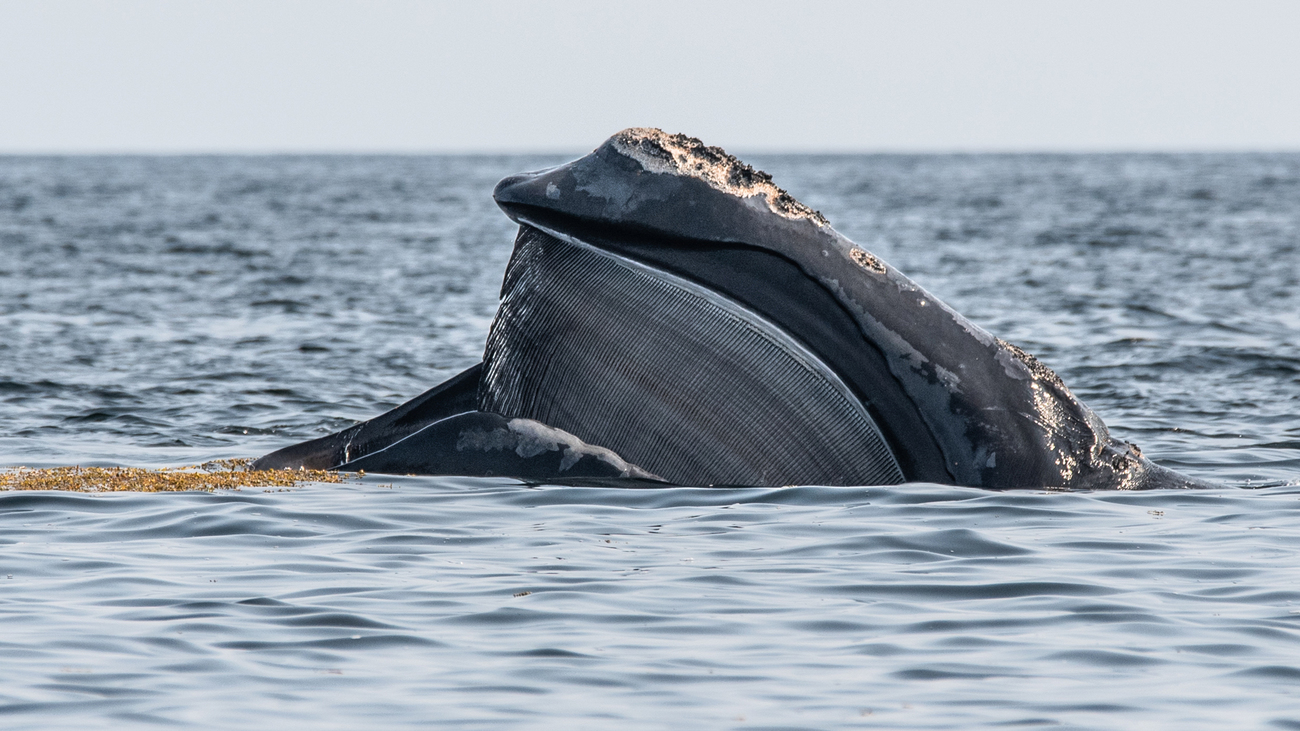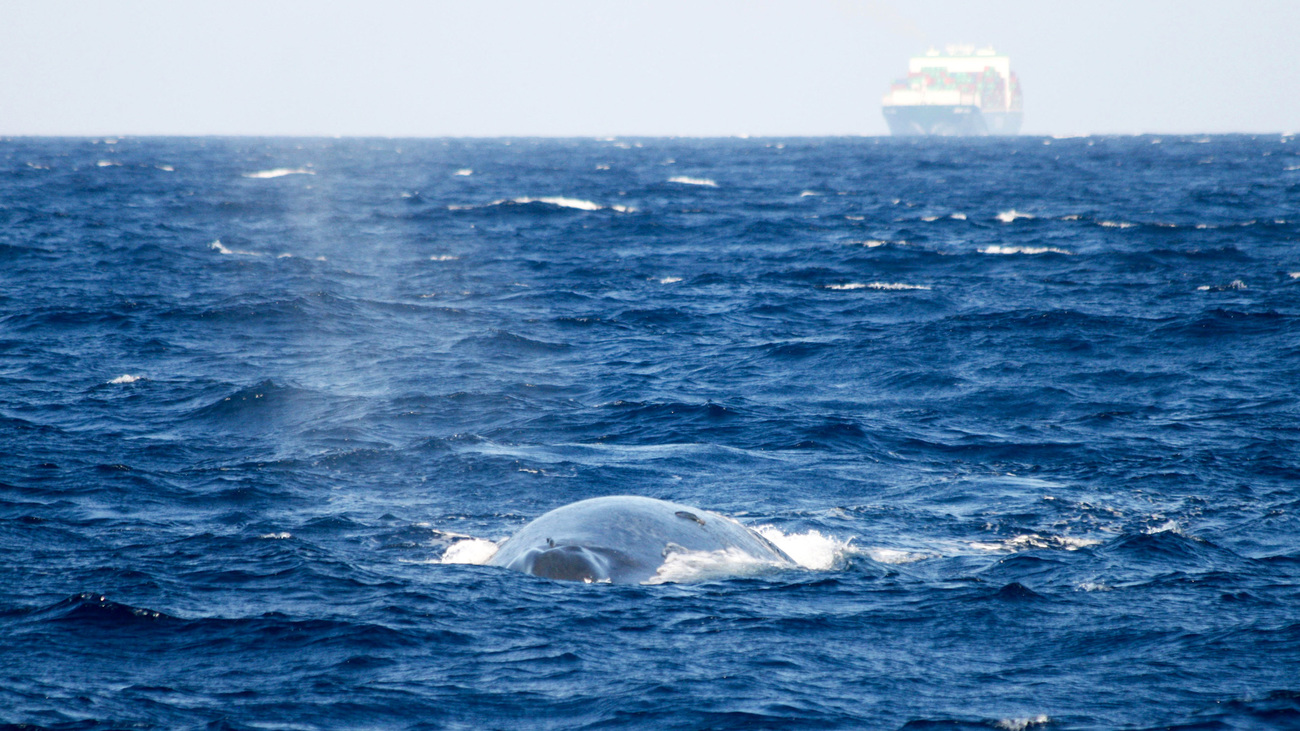marine conservation
marine conservation
The ocean faces more threats today than ever before. Human activities such as shipping, unsustainable fishing, industrial development and pollution are affecting marine life and habitats globally.
A healthy planet needs a healthy ocean. Healthy populations of large marine animals, particularly whales and sharks, play a key role in regulating ocean ecosystems and enabling the capture of carbon. Whales, for example, dive deep and stir up nutrients from the bottom of the sea, promoting nutrient circulation and stimulating phytoplankton growth—the foundation of the aquatic food web—which captures huge amounts of carbon and substantially enhances ocean productivity.
Protecting these large, iconic marine animals is critical, and through this work, we also protect many other species and vital habitats throughout the world’s ocean. For instance, this year, our Marine Conservation programme worked with our Disaster Response programme to support the restoration of coral reefs damaged by hurricanes in Colombia, in a powerful example of cross-programmatic collaboration in IFAW.
saving the North Atlantic right whale
Through the impact of our Save the Right Whale campaign, IFAW continues to be a key driver of fundamental regulatory change, generating public support while promoting the adoption of innovative technological solutions in both the U.S. and Canada to save this critically endangered marine mammal.
With the most recent population estimates decreasing by 8% in just one year, only 336 North Atlantic right whales (NARWs) remain. Our efforts are acutely focused on addressing the major threats to species recovery: entanglement in outmoded commercial fishing gear and collision with vessels. Since 2017, 50 right whales (14% of the total species population) have either died or are presumed dead. Where cause of death could be definitively determined, all these deaths were due to either entanglement or vessel strikes. As less than 90 of the remaining whales are reproductive-aged females, the death of even one individual is potentially catastrophic for species recovery.
This year, IFAW has prioritised addressing fishing gear entanglement, one of the deadliest threats to right whales. We’re working collaboratively with fishermen to test and advance ropeless fishing technology that essentially eliminates vertical buoy ropes from the water column, thus removing the main source of entanglement. Along with key early adopter fishing partners, including the Atlantic Offshore Lobstermen’s Association (AOLA), IFAW helped lead a first-of-its-kind ropeless gear pilot testing project in the offshore lobster fishery. The pilot project has subsequently been renewed due to increased interest from new fishermen, with IFAW helping procure additional ropeless units to increase testing capabilities.
Another piece of good news is that 19 NARW calves were born in the most recent calving season. With at least five born to first-time mothers, this marks the highest number of calves born in a season since 2015. Tragically, one of the calves was killed in a vessel strike within weeks of being born. This is why we have been working with partners to enhance our Whale Alert app, a situational awareness mobile app that alerts vessel operators to the nearby presence of right whales, so they know to watch out and slow down. In conjunction, IFAW has continued to advocate for mandatory speed limits for vessels of all sizes during times of peak right whale presence.
IFAW’s advocacy efforts have helped promote regulatory changes that include both federal and state funding critical to implementing NARW protection measures. IFAW’s influence resulted in more than 31,000 supporters taking action and submitting comments on new proposed federal rules that support stronger protection measures for right whales and endorse using ropeless gear. This is a solution based on coexistence for both right whales and the fishing industry. IFAW’s key legislative outreach efforts also led to increased funding for important conservation measures through the U.S. Federal Appropriations process. For FY21, US$6 million was successfully allocated, with IFAW actively working to secure an additional US$14 million for FY22.
Rounding out our strategic approach, IFAW has conducted focus group research to gain a better understanding of consumer awareness and interest in concepts that include “whale-safe” seafood products through use of ropeless fishing gear technology. Preliminary data and consumer sentiment was highly encouraging and such qualitative studies will help drive our impact by identifying ways to generate further consumer and industry support.
IFAW’s advocacy efforts have helped promote regulatory changes that include both federal and state funding critical to implementing NARW protection measures. IFAW’s influence resulted in more than 31,000 supporters taking action and submitting comments on new proposed federal rules that support stronger protection measures for right whales and endorse using ropeless gear. This is a solution based on coexistence for both right whales and the fishing industry. IFAW’s key legislative outreach efforts also led to increased funding for important conservation measures through the U.S. Federal Appropriations process. For FY21, US$6 million was successfully allocated, with IFAW actively working to secure an additional US$14 million for FY22.
Rounding out our strategic approach, IFAW has conducted focus group research to gain a better understanding of consumer awareness and interest in concepts that include “whale-safe” seafood products through use of ropeless fishing gear technology. Preliminary data and consumer sentiment was highly encouraging and such qualitative studies will help drive our impact by identifying ways to generate further consumer and industry support.
reducing ship strike risk and ocean noise
The threat of human-generated ocean noise to marine life is increasingly being recognised around the world. A multi-year study as part of the Joint Monitoring Programme for Ambient Noise in the North Sea (JOMOPANS) has mapped ocean noise in the North Sea. The researchers identified shipping as the main source of excess noise. Areas with intensive shipping traffic experience excess noise levels of up to 30 decibels, which is 100 times higher than in areas without shipping.
IFAW teamed with OceanCare to provide expert review and co-publication of two research studies by the Belgian government. The main findings show that limiting speeds to 75% of ship design speed results in a 10% reduction in the emission of the main pollutant gases like carbon dioxide (CO2), nitrogen oxides (NOx), sulfur oxides (SOx) and black carbon, and a meaningful reduction of underwater noise. IFAW played a pivotal role joining the Belgian Ministry of Environment webinar announcing this research and helped publicise the results, with wide recognition in the media. With the help of infographics we developed in close collaboration with the French government, we also informed stakeholders about the damaging effects of noise pollution and solutions available to reduce the noise.
This year we helped achieve momentum to further recognise the problem of underwater noise at the International Maritime Organization (IMO), following a proposal by Canada which was supported by IFAW. This moves the issue back onto the agenda of the IMO, the UN body governing international shipping. Now appropriate committees and governments are tasked to explore options for reducing noise from shipping. This is a major achievement toward our overall goal of reducing shipping noise globally.
As well as lowering underwater noise, reduced ship speeds also decrease the risk of ships colliding with whales (known as ship strikes). Research indicates that for every whale we see that has been fatally injured by a collision with a vessel, as many as 20 whales with the same fate go undetected.
IFAW continues to work in a coalition with the Pelagos Cetacean Research Institute, WWF Greece and OceanCare to reduce the risk of ship strikes for the remaining sperm whale population in the Hellenic Trench, off the west coast of Greece. There is growing concern that this endangered eastern Mediterranean population, which only numbers between 200 and 300 individuals, will not survive if ship strikes continue at the current rate.
According to the Pelagos Cetacean Research Institute, the cause of death for 50% of stranded sperm whales in this area can be attributed directly to ship strikes.
There is a solution! Our analysis has identified options to significantly reduce ship strike risk with a small offshore shift in the current shipping routes. With these changes, the overall collision risk for sperm whales in the study area would be reduced by around 75%, while a maximum of 11 nautical miles would be added to major routes and only around five nautical miles for the majority of ships transiting the area.
The efforts of our work as a coalition encouraged Greek authorities to issue an official notice informing mariners about the presence of marine mammals in the Hellenic Trench. This new navigational telex (NAVTEX) warning instructs mariners to look out for whales and avoid collisions with them. This is a promising first step toward protecting these endangered sperm whales from ship strikes, and we will work to ensure shipping companies are made aware of the warning to increase the chances of this measure being a successful conservation tool.
Stay in the know. Be ready to act.
You’ll receive news, updates on activities and on future giving opportunities. You can unsubscribe at any time.

